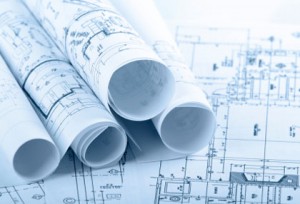 All owners, architects and other design professionals are urged to uniformly accept responsibility for design related plans and specifications applying to construction projects. This design responsibility includes drafting complete specifications for inclusion in project bidding documents, initiating or approving all design-related additions, deletions and changes to project specifications and accepting ultimate responsibility for the safety and utility of all project design elements. For design-build projects, the responsibility for the plans and specifications must be extended to the design-build entity in order to ensure project success.
All owners, architects and other design professionals are urged to uniformly accept responsibility for design related plans and specifications applying to construction projects. This design responsibility includes drafting complete specifications for inclusion in project bidding documents, initiating or approving all design-related additions, deletions and changes to project specifications and accepting ultimate responsibility for the safety and utility of all project design elements. For design-build projects, the responsibility for the plans and specifications must be extended to the design-build entity in order to ensure project success.
Delegation of professional services which constitute the practice of architecture or engineering, should ordinarily be limited to manufactured products such as curtain walls and elevators, and then only subject to constraints including the following:
1. The owner and architect must specify all performance and design criteria that these professional services must satisfy.
2. All such services must be specifically required in the contract documents and not be in violation of any applicable law.
3. The architect, or other owner designated design professional, must approve all design related work performed by others and coordinate the overall design integration, safety of the public, compliance with codes and other legal or owner requirements as contracted. With respect to other than the manufactured products themselves, the architect or other owner designated design professional shall accept and retain sole responsibility for overall design.
4. Contractors and subcontractors must not be held responsible for the adequacy of the performance or design criteria indicated by the contract documents.
5. The use of inappropriate or unclear specifications ordinarily increases costs to the owner. Higher bid prices, frequent change orders, and lost time usually result when design documents lack clarity or fail to adequately integrate the work of individual trades. Attempts to shift design responsibility to the contractor impose an unquantifiable risk on the contractor that may increase the owner’s cost without shielding the owner against liability to others.
6. Specification divisions for each trade must be clear and complete. Phrases such as “intended results,” “including but not limited to” and “reasonably inferable” create bidding uncertainties, result frequently in claims and lessen the owner’s chances that the project will meet its expectations.
7. Review of design drawings and documents by the contractor should be for the purpose of facilitating construction and not impose on the contractor a duty to discover errors, omissions or inconsistencies. It should be recognized by all concerned that the contractor’s review is made in its capacity as a contractor and not as a design professional.
8. Review and approval of contractor submittals by the designer is another area that can create distress for the project team. Some designers will “approve” a submittal with an approval stamp that contains language absolving the designer of responsibility for any mistakes in the review process. During contract negotiations and initial meetings between the owner, designer, and construction team, this issue should be frankly discussed.
Long experience demonstrates that a clear division of responsibility between the architect, as designer, and the contractor, as builder, offers an effective way to achieve fast, safe, and economical construction results.
0 comments:
Post a Comment